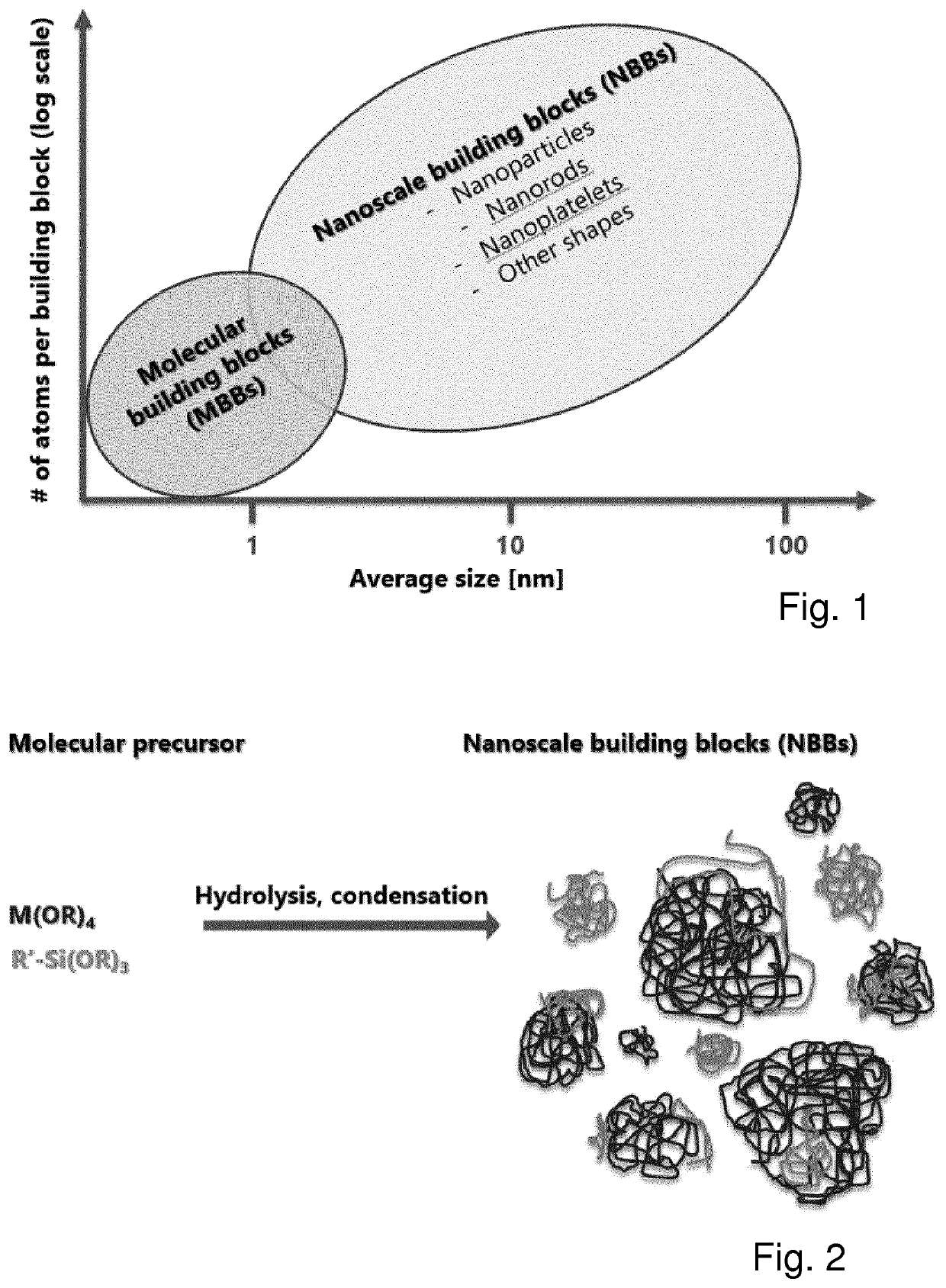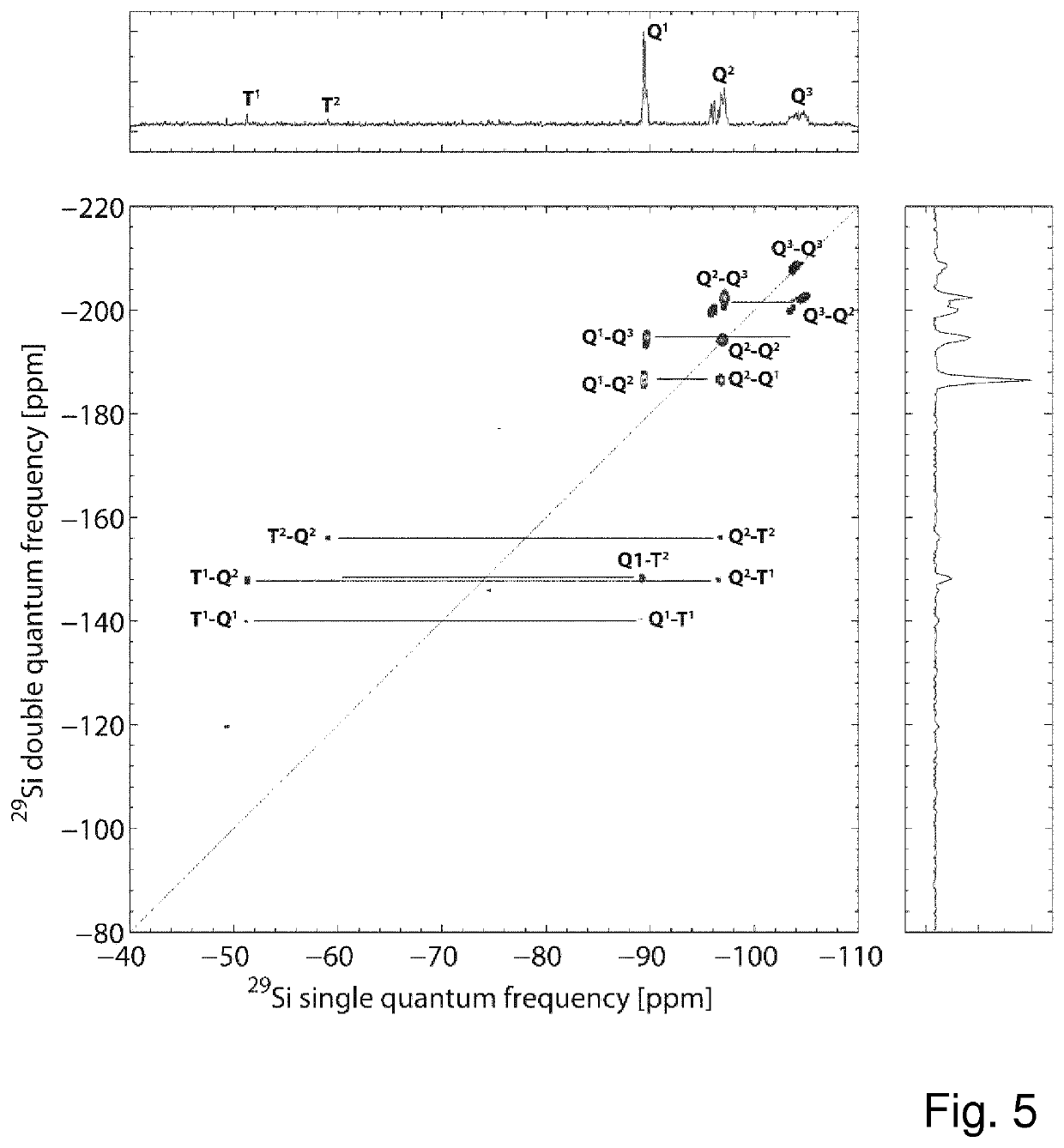Method for preparing a siloxane based polymeric liquid material and materials made therefrom
a polymer liquid material and polymer technology, applied in the direction of nanotechnology, etc., can solve the problems of poor surface selectivity of deposition, difficult control of obtained material morphology, and method 1) is rather impractical, and achieves great precision and control over subnanometer structure and composition, and extreme variability
- Summary
- Abstract
- Description
- Claims
- Application Information
AI Technical Summary
Benefits of technology
Problems solved by technology
Method used
Image
Examples
examples 3-9
Various Two-Component Core-Shell MMBs with Trialkoxysilane Shell Chemistry
[0164]i) Fabrication of the hyPAS Cores[0165]Pure tetraalkoxide hyPAS and mixed cores were prepared analogous to Example 1 i), with identical catalyst amount, temperature and stirring rate. The amounts of tetraalkoxide and optional functional trialkoysilane secondary precursor component as well as the selected amount of Ac2O used for the synthesis can be found in the above table for each experiment and are given in millimols [mmol]. The reaction time was 1 h 30 minutes.
[0166]ii) Growth of Organofunctional Trialkoxysilane Shells[0167]In the second step, shells based on various organofunctional trialkoxysilanes and mixtures thereof were grown according to the general process described in example 1 ii). The exact reaction parameters are given in the table below. Furthermore, the reaction products were characterized by means of 29Si NMR spectroscopy and the material parameters (DPcore, initial, DPcore, final, DDPc...
examples 13-18
of (TEOS / MTES) and (TEOS / VTES) Core-Shell NBB Derived NBB Hydrolysis Products
[0172]A standard hydrolysis recipe was used to transform TEOS / MTES and TEOS / VTES core shell prepared with under identical conditions as given in example 1 but with varying nshell:ncore ratios and adjusted f factors, respectively to their corresponding NBB hydrolysis products. The following preparation scheme was used for the preparation of the NBB sol (hydrolysis products):
[0173]4.32 g (6.4 ml) of ethanol and 3.84 of NBB crude mixture with TEOS core / MTES shell were weighed in and heated to 40° C. in an Erlenmeyer beaker with stirring. After a waiting period of 5 minutes, 15 microliters of 10% H2SO4, 0.27 ml of distilled water were added to the mixture. After a brief homogenization period, the beaker was sealed off with parafilm, removed from the heating source and left standing under ambient condition for 60 hours.
[0174]The so-obtained NBB sols were then gelled using the following standard protocol: 7 ml of...
PUM
| Property | Measurement | Unit |
|---|---|---|
| Temperature | aaaaa | aaaaa |
| Temperature | aaaaa | aaaaa |
| Temperature | aaaaa | aaaaa |
Abstract
Description
Claims
Application Information
 Login to View More
Login to View More - R&D
- Intellectual Property
- Life Sciences
- Materials
- Tech Scout
- Unparalleled Data Quality
- Higher Quality Content
- 60% Fewer Hallucinations
Browse by: Latest US Patents, China's latest patents, Technical Efficacy Thesaurus, Application Domain, Technology Topic, Popular Technical Reports.
© 2025 PatSnap. All rights reserved.Legal|Privacy policy|Modern Slavery Act Transparency Statement|Sitemap|About US| Contact US: help@patsnap.com



